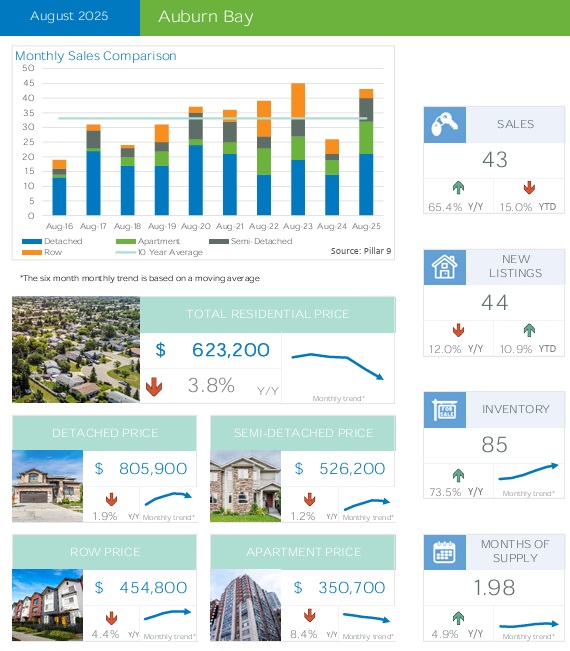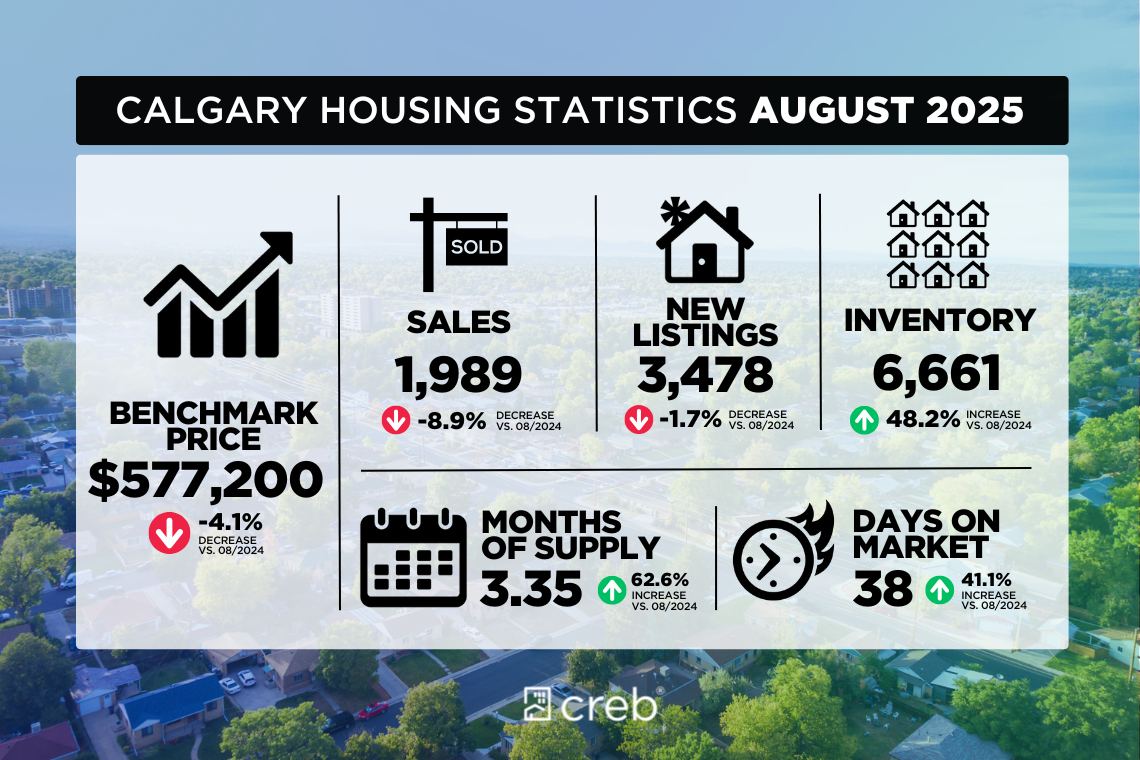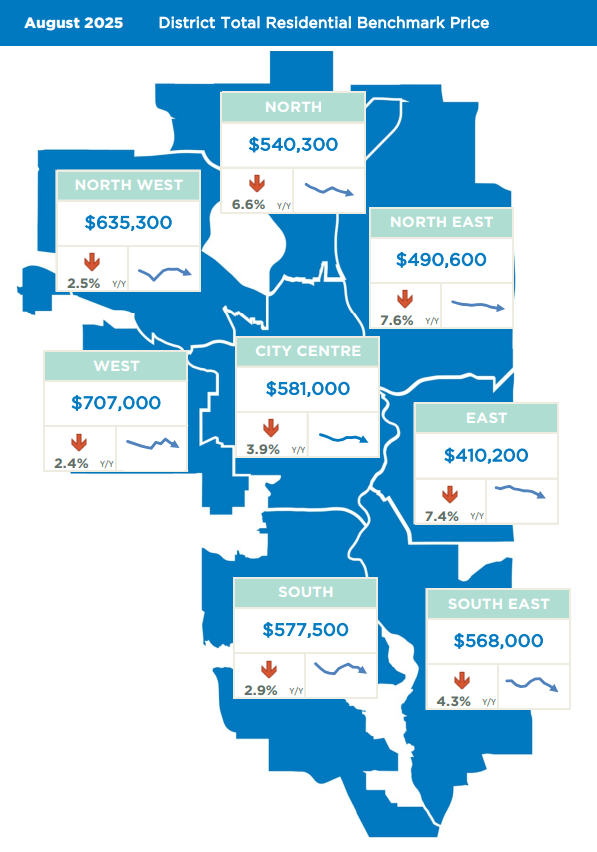Total Sales: 139 (+57.9% Y/Y)
New Listings: 243 (+46.4% Y/Y)
Sales-to-New-Listings Ratio: 57.2% – a balanced to slightly seller-leaning market
Average Inventory: 159 (+65.9% Y/Y)
Months of Supply: 3.42 (+5.0% Y/Y)
Average Days on Market: 46 (+21.2% Y/Y)
Benchmark Price: $571,633 (▼ 5.0% Y/Y)
Median Price: $638,500 (▼ 7.9% Y/Y)
Average Price: $672,548 (▼ 10.7% Y/Y)
Despite softer prices, Mahogany remains one of Calgary’s most active lake communities, with buyer activity well above its 10-year average (81 quarterly sales).
Market Trends by Property Type
Detached Homes
Sales: 72
Benchmark Price: $806,367 (▼ 1.9% Y/Y)
Median Price: $755,000 (▼ 5.6% Y/Y)
Average Price: $816,008 (▼ 9.7% Y/Y)
Detached listings continue to dominate, with strong demand for family-sized two-storey homes near the lake. Price adjustments indicate buyers are showing greater price sensitivity amid higher inventory.
Semi-Detached Homes
Benchmark Price: $571,767 (▼ 1.5% Y/Y)
Median Price: $604,950 (▼ 2.4% Y/Y)
Average Price: $539,540 (▼ 4.7% Y/Y)
Semi-detached units saw modest price declines and balanced turnover, attracting entry-upsize buyers seeking proximity to amenities without detached-level pricing.
Row / Townhomes
Benchmark Price: $483,200 (▼ 2.9% Y/Y)
Median Price: $536,000 (▼ 4.7% Y/Y)**
Row homes remain competitive options for young professionals and investors, with stable absorption and affordability relative to detached homes.
Apartments
Benchmark Price: $344,100 (▼ 7.7% Y/Y)
Median Price: $356,500 (▼ 11.8% Y/Y)
Apartment prices show the steepest year-over-year decline, but the segment benefits from continued rental demand and increased investor interest due to Calgary’s strong population growth.

Price Distribution
The majority of Mahogany’s Q3 2025 sales occurred between $600,000 – $799,999, followed by activity in the $400,000 – $599,999 band. Luxury homes ($1 million +) represent a smaller but steady niche.
Market Insights
The increase in listings and modestly slower absorption suggest a normalizing market following the pandemic-era highs.
Buyers have more selection, particularly in apartment and mid-range detached homes.
Sellers remain in a good position if pricing realistically and emphasizing community lifestyle value.
Community News (Fall 2025)
Mahogany continues to enhance its family-focused, lake-lifestyle community:
Mahogany Harvest Market at West Beach (October 2025): Local artisans, produce, and food vendors celebrate the season.
Mahogany Urban Village Progress: Ongoing commercial and retail expansion (restaurants, clinics, boutique services) strengthens walkability and local amenities.
Future Infrastructure: Anticipated completion of new southeast Calgary transit corridor will improve accessibility for commuters by 2026.
Heading into Q4 2025, Mahogany’s market is expected to stabilize further, with inventory levels moderating and prices holding near current benchmarks. The community’s lake access, school catchments, and vibrant amenities continue to make it one of the most desirable master-planned areas in Calgary’s southeast.
Contact us for a Free Home Evaluation.






















